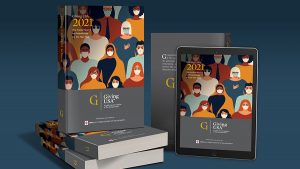
Opportunities persist when organizations pursue them
While a strong year-end stock market and record giving in response to COVID-19 and racial justice efforts drove growth in contributions, a tumultuous year created an uneven picture.
TOTAL ESTIMATED CHARITABLE GIVING IN THE UNITED STATES ROSE 5.1% BETWEEN 2019 AND 2020 (3.8%, adjusted for inflation) TO $471.44. This increase reflects flat or positive growth in giving to seven of the nine major recipient subsectors in inflation-adjusted dollars.
LAST YEAR’S GIVING STRAYED FROM HISTORICAL GIVING TRENDS IN FOUR SIGNIFICANT WAYS
1 Total giving increased despite a recession at a rate that exceeded the 40-year average
2 Foundation giving skyrocketed, reaching its largest-ever share of total giving at 19%, while corporate giving decreased
3 Individual giving continued to increase with more giving “in the moment” as it relates to the immediate response to COVID and social justice issues
4 Gifts to nonprofits providing direct social services, supporting people in need, and protecting civil rights increased the most.
WHAT CAN WE LEARN FROM THIS? HERE ARE OUR KEY TAKEAWAYS:
Don’t Create Excuses
Countervailing influences are always present, therefore opportunities persist when organizations pursue them. It’s a matter of prioritizing the initiatives for which they are raising money, positioning the organization as responsive to community needs, and proactively communicating their response to these challenges from a position of innovation and fiscal responsibility.
Focus Fundraising Strategies Where ROI is Greatest
Where there is economic hardship, there is also opportunity. When seeking funding, nonprofits should focus where the ROI is optimal while “doubling down” to help those in greatest need. This includes targeting individuals and corporations in industries that saw the biggest growth – such as technology – and not in industries that suffered, such as hospitality. Funds raised from companies making money during hard times or individuals with growing portfolios can, in turn, be used to expand programs and services to provide additional help to those who have become unemployed, suffered social injustice, experienced food and housing insecurity, or are encountering other adversities.
Help Donors Be Part of the Solution
In times of challenge, donors seek to be an active part of the solution. In 2020, however, they could not volunteer, attend events, or participate in activities offered by organizations. But they could – and still can – give money. For those restricted from actively engaging with an organization and those it serves, making contributions is one outlet to make a difference. This generosity was evident in the increased giving in eight key categories including Public Society Benefit, Individuals, Environment/Animals, Human Services, International Affairs, Education, Foundations, and Religion.
While people and institutions give in different ways, organizations should customize their messaging, engagement strategies and giving opportunities to optimize impact for donors, the organization and the community.
Be Prepared to Walk the Walk
With an increased focus on diversity, equity, access and inclusion, all nonprofits will need to look internally and externally as to how they are responding. If an organization says it has a DEAI agenda, it needs to be infused throughout the organization and not simply a public statement or stated value that hangs on the wall. It also must be reflected in how the organization reaches into diverse communities and listens and responds to community needs. And nonprofits should be prepared to answer detailed culture and outcomes-based questions from funders about their DEAI initiatives.
Remember the Basics
Even in times of challenge and change, the basics always persist. These include:
- Proactive communications
- Personalized relationship management
- Meaningful engagement
- Accountability and service
- Outcomes and impact
IN SUMMARY
Giving in 2020, amid complex and challenging developments, reminds us of the resiliency of philanthropy, immediacy of response and the continued generosity of the American people.
The numbers are out from Giving USA, which produces the nation’s longest-running annual report on philanthropy, but what do they mean for nonprofit organizations?
Richard Tollefson is founder and president at The Phoenix Philanthropy Group, an Arizona-based international consulting firm serving nonprofit organizations as well as institutional and individual philanthropists. He can be reached at 602-578-0778 or tollefson@phoenixphilanthropy.com.
